June Gardening Tips and To-Dos for the Pacific Northwest Region
June is here, bringing gorgeous garden blooms and signaling that summer is approaching. The Pacific Northwest region has plenty of gardening tasks and tips to remember. Whether you’re an experienced gardener or just starting out, I’ve got some June gardening tips and to-dos for your garden.
The days are getting warmer and longer. June is the last month of spring, and there’s still plenty to do to keep your garden healthy and beautiful.
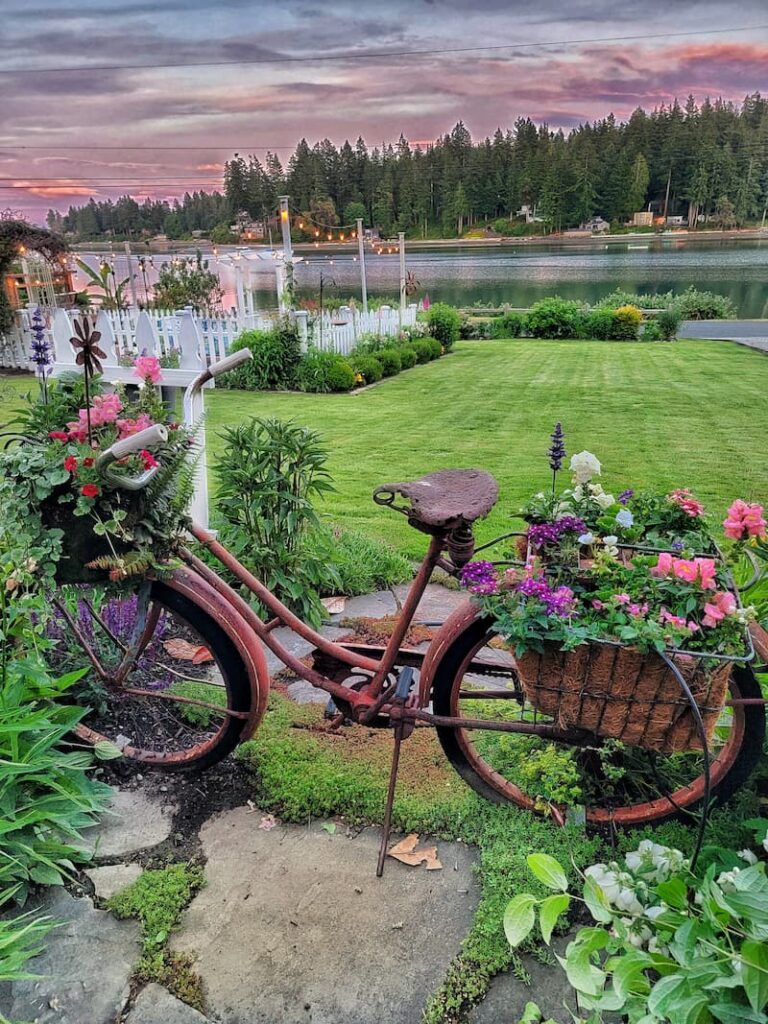
As an Amazon affiliate, I earn a commission from qualifying purchases at no additional cost to you. My blog also features other affiliate links for your convenience. Click here to read my privacy policy.
Unique Growing Conditions of the Pacific Northwest
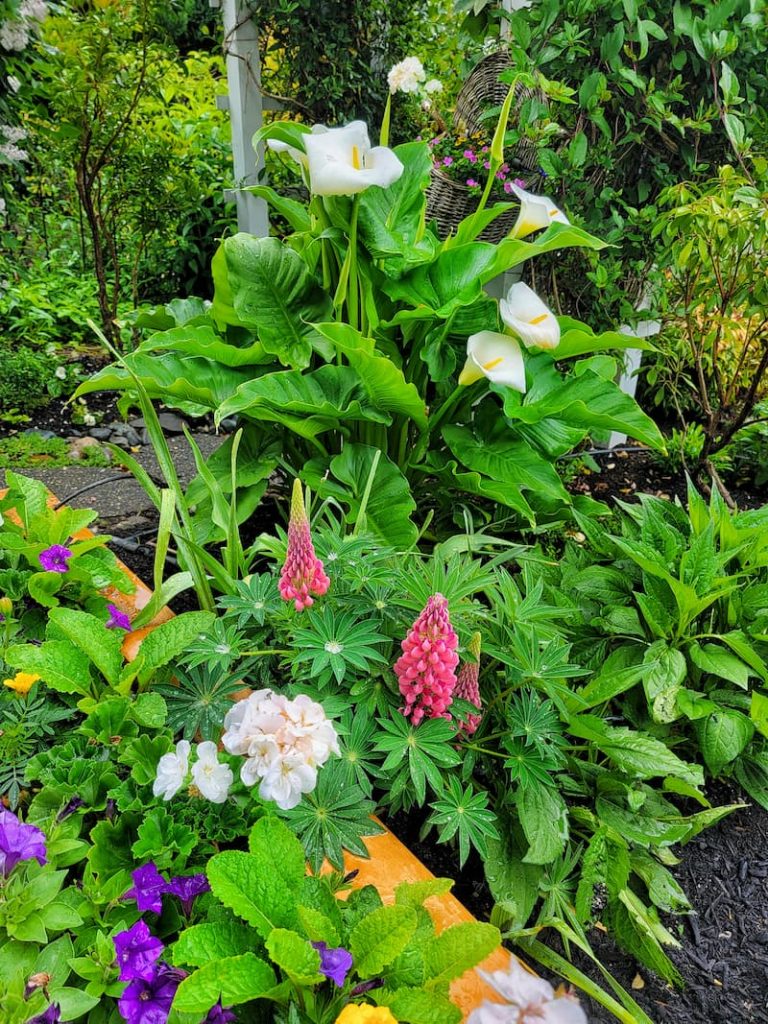
As a gardener in the PNW, it’s easy to appreciate our region’s unique growing conditions.
The Pacific Northwest is known for its mild maritime climate. Generally, we experience cooler summers, mild winters, and consistent yearly rainfall.
This makes the Pacific Northwest the perfect growing environment for many plants, with a longer growing season than other parts of the country.
Plan Strategically With Excessive Moisture
Because of the abundant rainfall in the Pacific Northwest, proper drainage and soil composition are important factors to consider when gardening.
Excessive moisture can lead to root rot and other fungal diseases. Raised beds, well-draining soil, and strategic plant placement can help prevent waterlogging and optimize your garden’s growing conditions.
June Gardening Tips for the Pacific Northwest
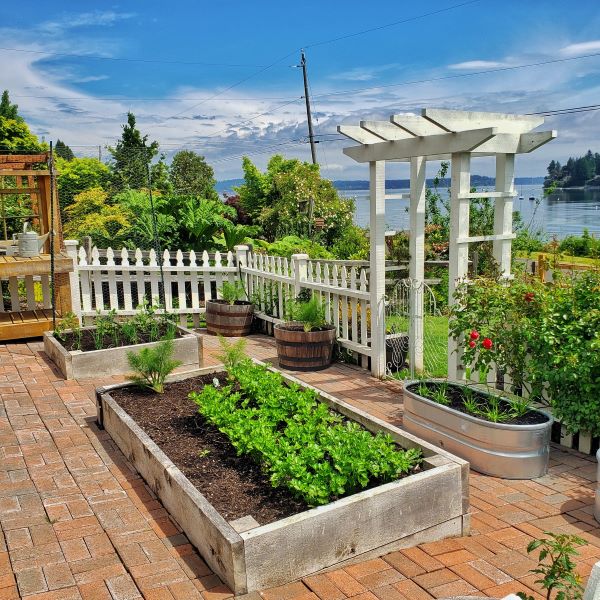
Whether you’re a seasoned gardener or just starting out, these June “gardening by month” tips will help your garden thrive in the summer. My tips are based on hardiness zone 8b, so make the necessary adjustments to this month’s timeline.
If you’re unsure of your gardening zone, look it up on the USDA Plant Hardiness Zone Map.
What to Plant in the Garden in June
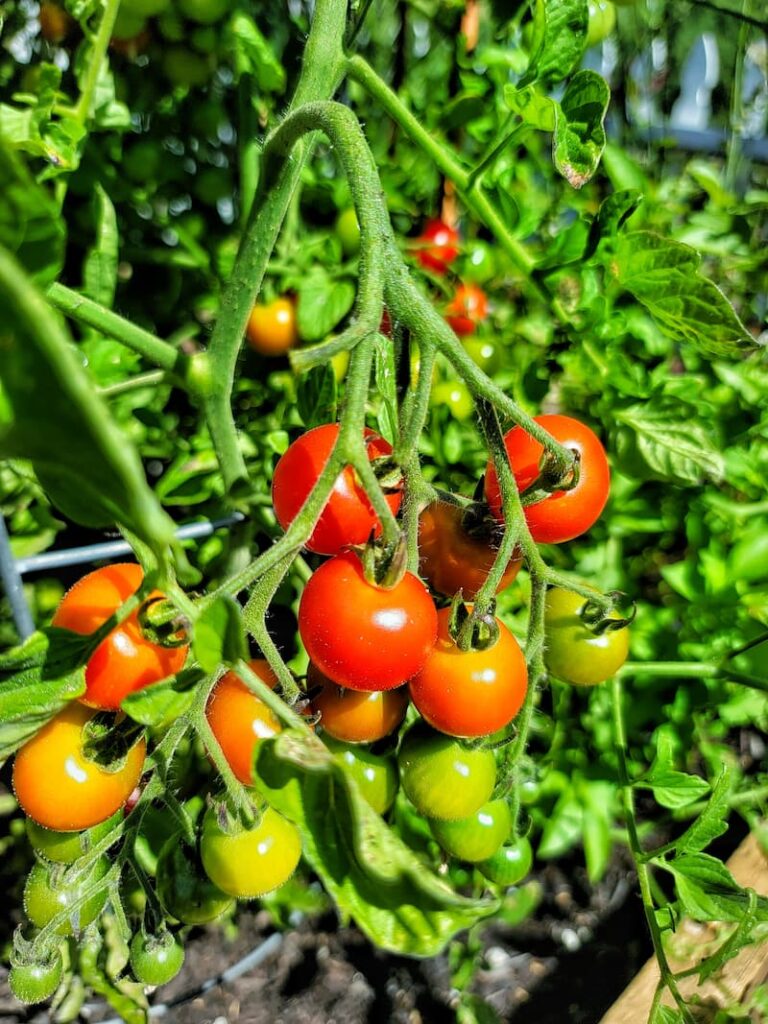
June Vegetable Garden Planting
Can you plant fruits and vegetables in June? Yes, depending on your location and climate, you can still plant certain fruits and vegetables in June.
Mid-June is an ideal time to start planting fall and winter crops. You can also direct seed your summer crops, but it’s important to do it soon.
Consider planting the following in your Pacific Northwest vegetable gardens in June:
Plant tomatoes and eggplant when night-time temperatures have warmed up and the soil temperature is above 60°F.
If you are planning to grow a fall vegetable garden, it is a good idea to start seeds and plant transplants at the end of June and early July.
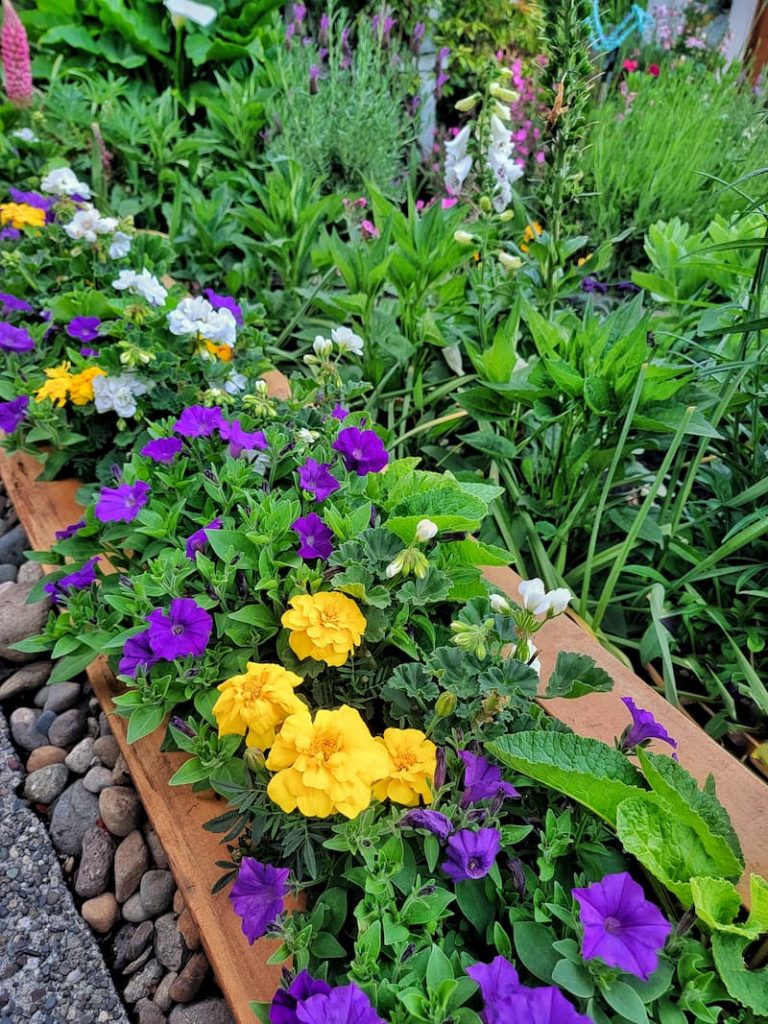
June Flower Garden Planting: Perennials
There are still plenty of perennials you can plant in the Pacific Northwest in June.
The local nurseries or garden centers should still have a supply of perennials. Some favorites are Daylilies (Hemerocallis), Coneflowers (Echinacea), Black-eyed Susans (Rudbeckia), Shasta Daisies, Lavender (Lavandula), Russian Sage, and Astilbe.
June Flower Garden Planting: Annuals
June is still a great time to plant colorful annuals to add a pop to your garden. Consider planting annuals like cosmos, nasturtiums, sunflowers, and petunias for vibrant summer blooms.
My June garden doesn’t seem to have a lot of perennials blooming right now, so planting annuals helps to bring color and fill in any spaces in the garden right now. Annuals can make an impact when planting in flower containers and window boxes.
June Garden Maintenance for the Pacific Northwest
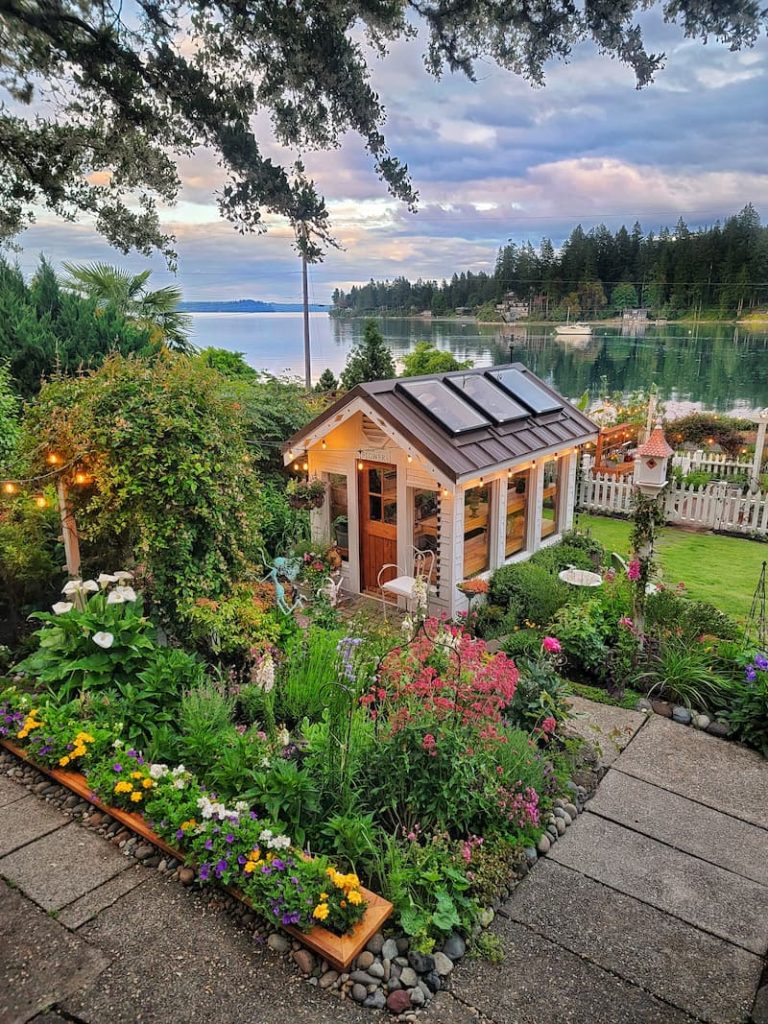
The month of June is a transition period for the Pacific Northwest.
This month usually shifts from the rainy season to drier and sunnier days. While the frequency of rainfall may decrease, the soil retains moisture from previous months, providing essential hydration to plants.
Make Sure Your Plants are Getting Enough Water
Ensure your plants receive the right amount of water during the warmer months. It’s important to balance watering and being aware of changing weather conditions.
Gardeners can adjust their irrigation systems to accommodate the reduced rainfall, ensuring plants receive the right amount of moisture without overwatering.
If you have an irrigation system, check it to ensure it’s in good working order. Test and run each system manually for at least five minutes to ensure there are no leaks or repairs that may be needed.
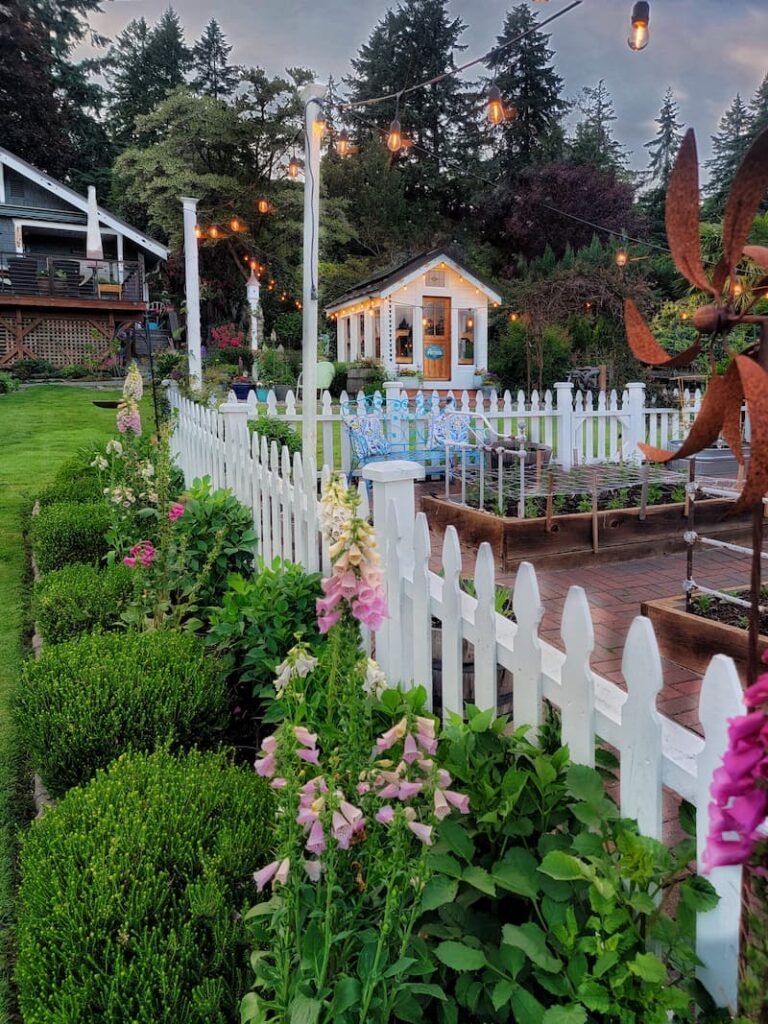
Newly planted trees and shrubs should be watered deeply every week or two until consistent rainfall in the fall season.
Provide your flowers and shrubs with about an inch of water per week. Reduce watering as early potatoes begin to die back. Change the water regularly in the birdbaths.
Soaker hoses and drip irrigation systems are a great way to water plants deeply into your flower gardens.
Divide Plants
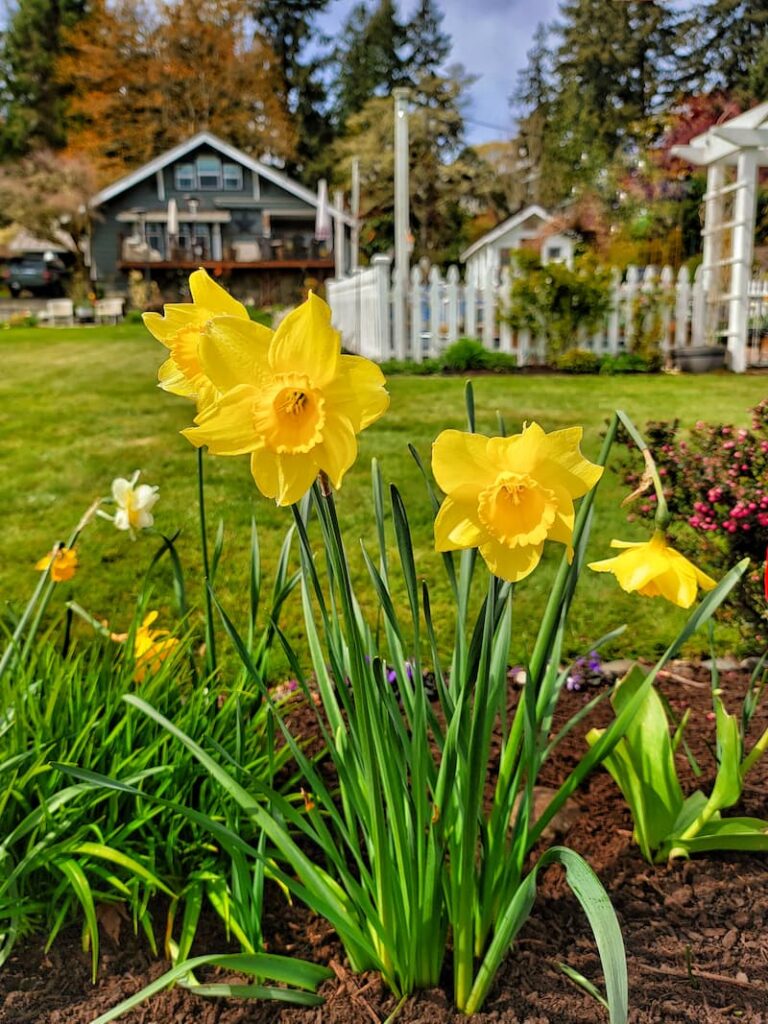
What does the term “dividing perennials” mean? Dividing perennials is a gardening technique that separates larger plants into smaller clumps and transplants them in different locations.
This is usually done when the plants in your garden have outgrown their space or become too large to manage.
If you hear the gardening terms dividing and splitting, they are essentially the same technique.
You can still divide perennials that aren’t early summer bloomers. Dividing perennials after blooming like primroses, can give you more plants in other areas of your garden. It’s a good idea to divide daffodil clusters every few years to prevent overcrowding and for better blooming.
Pinch Your Annuals
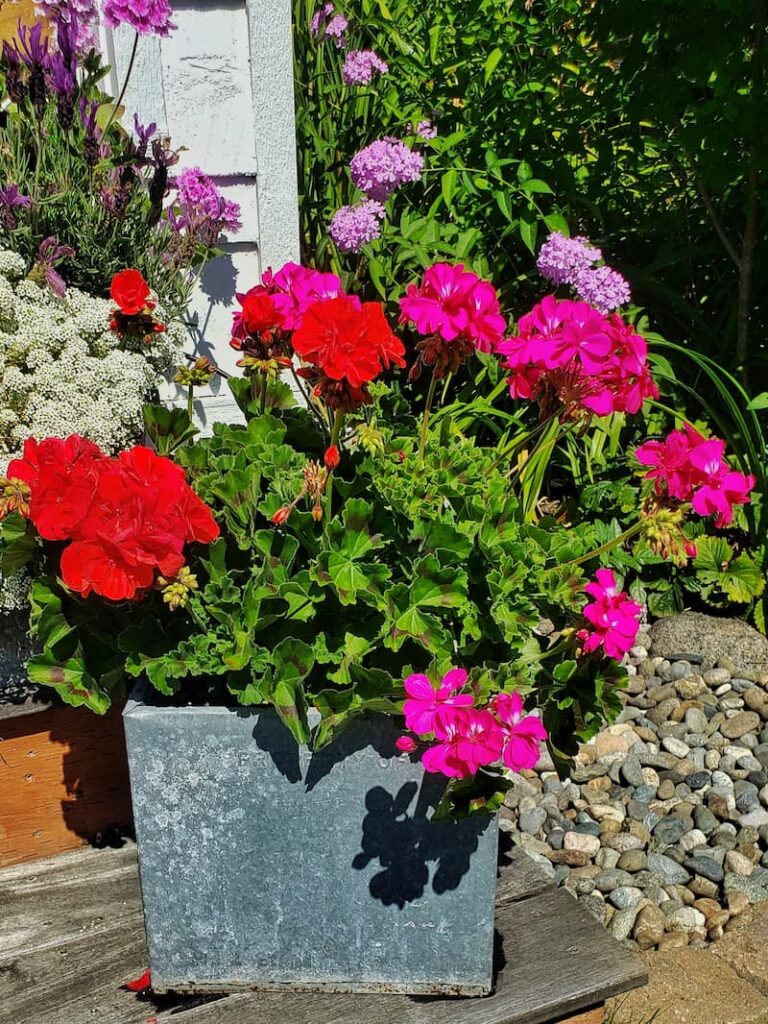
There’s a simple garden technique called pinching that can create fuller, bushier plants, more blooms, and longer cut flower stems.
Cosmos, zinnias, dahlias, sweet peas, snapdragons, and other cut flowers benefit from pinching the central stem of the plant when they’re young, encouraging the plant to produce new side branches of a bushier plant and more blooms throughout the growing season.
Annuals like fuchsias, geraniums, and cosmos should be pinched back after they start to wilt and die off to prevent them from getting leggy.
Prune and Deadhead
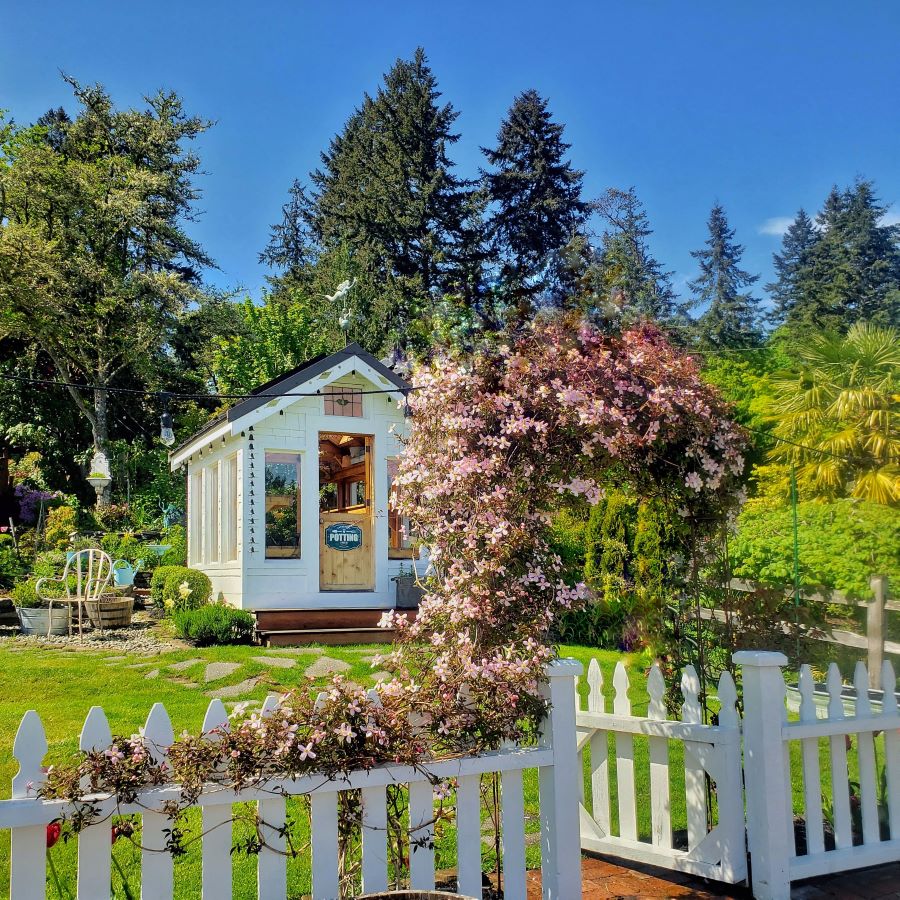
Snap off old flower heads from rhododendrons to redirect energy to the plant. Be careful not to injure new branches emerging beneath the spent blooms.
For bushier plants, cut back azaleas by removing the outermost inch of new growth. Prune spring-blooming shrubs and trees, such as lilacs and crab apples, after they finish blooming.
Stop cutting asparagus and rhubarb at the end of the month so they can rejuvenate for the next year.
You can prune evergreens anytime until late summer.
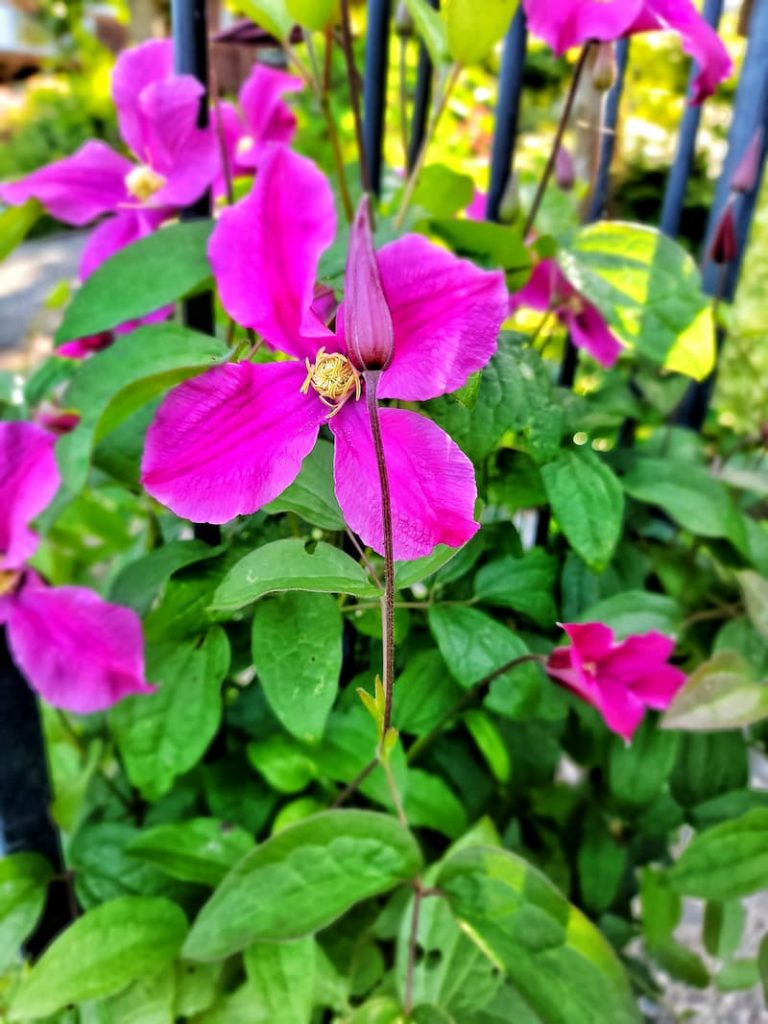
Vines like clematis, honeysuckle, and jasmine tend to become out of control this time of year. Try to cut back, train, or tie new shoots to the trellis or structure.
Deadhead spent blooms regularly to encourage continuous flowering.
Spring Bulb Maintenance
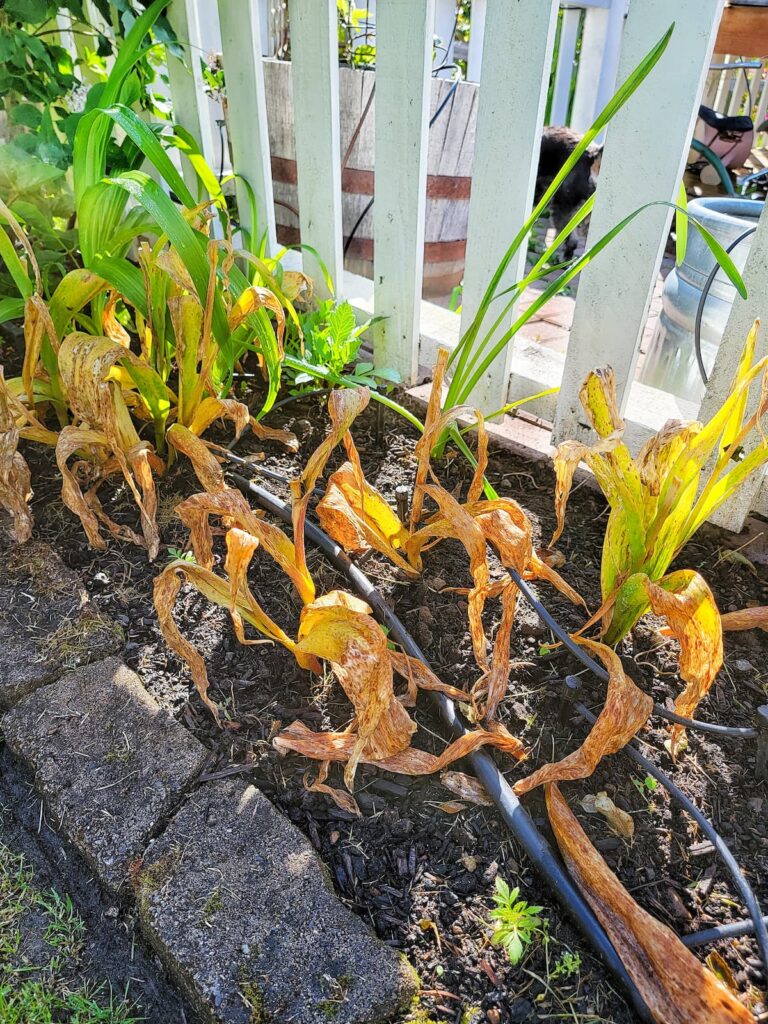
Remove leaves from tulips, daffodils, and other spring-flowering bulbs once they turn brown and easily emerge from the ground. Dig up spring bulbs that did not grow well this season.
*Did you know that most tulips and hyacinths last only 2-3 years?
Fertilizing and Feeding Your Pacific Northwest Garden in June
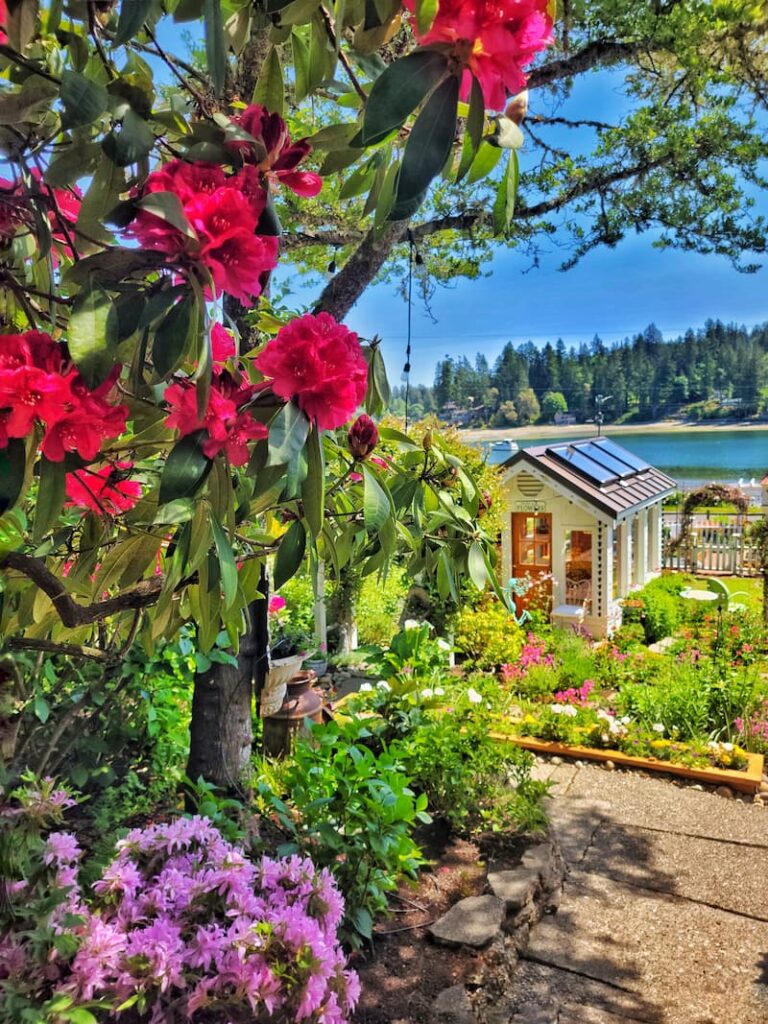
Feed your roses a bone meal for added calcium and insect protection. Fertilize flowering shrubs such as rhododendrons and azaleas.
Replace decomposed compost or mulch to maintain moisture and control weeds.
Weeding and Pest Control
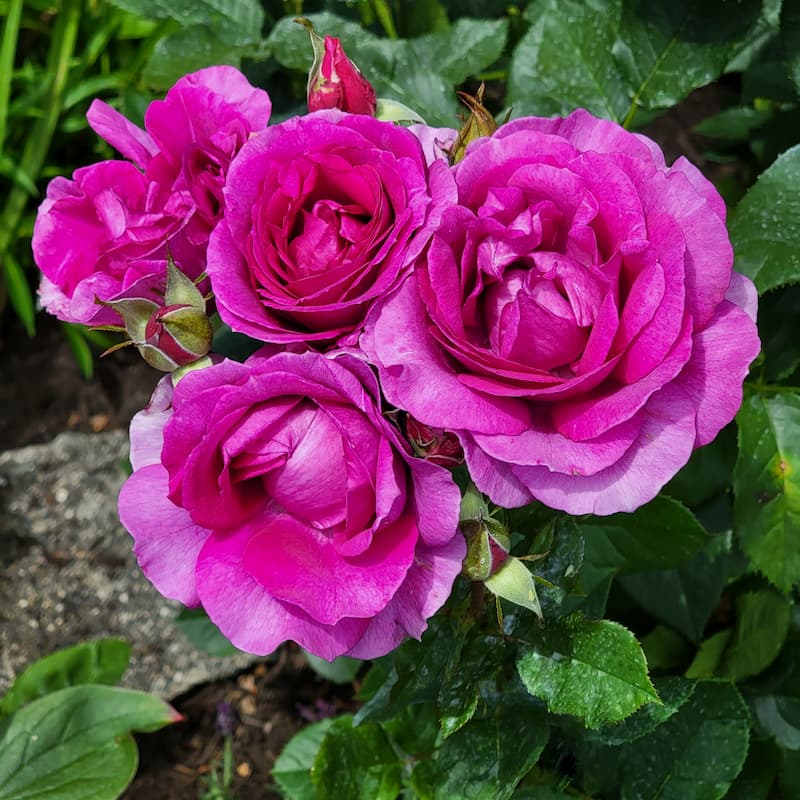
Pull weeds as soon as they sprout to prevent them from getting out of control. If you don’t have the time to spend quality time in the garden, at least cut the weed heads off so they don’t go to seed.
Preventive pest management is one of the most important garden chores, as it prevents plant damage from insect pests.
Roses can be a major challenge in the garden with black spots. If your roses have black spot-infected areas, remove them to prevent spreading. Spray roses with insecticidal soap to eliminate aphids, mites, and thrips.
Hand-pick caterpillars off plants. Drop them in a bucket of soapy water or toss them out where the birds can find them.
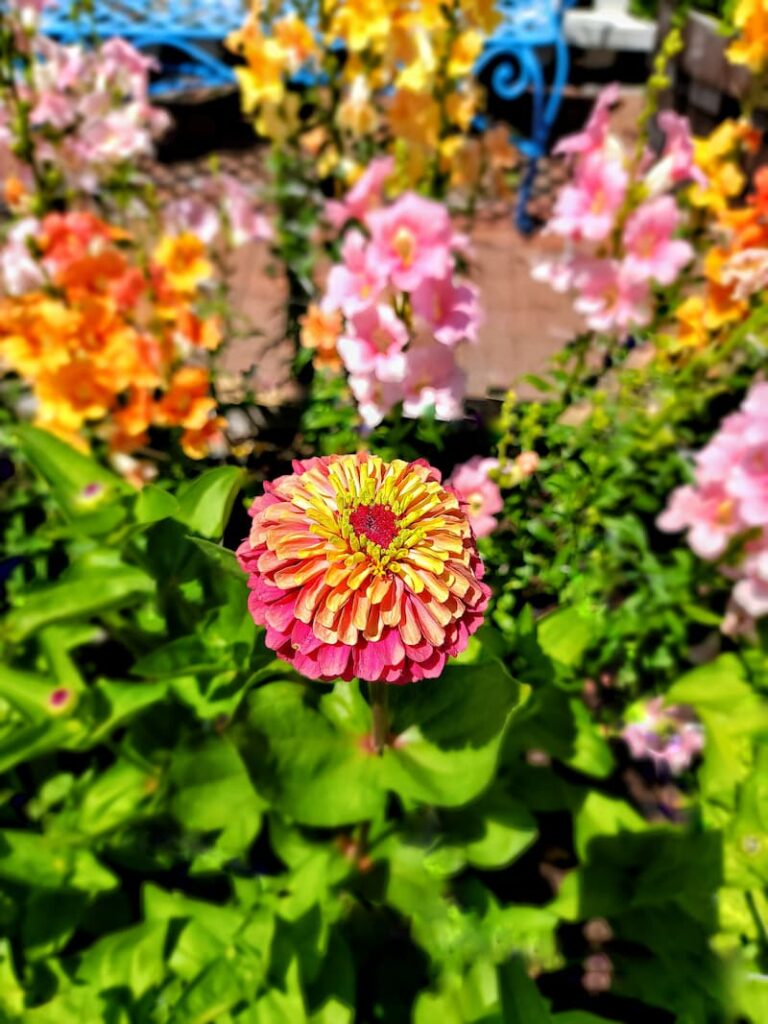
Continue with your slug and snail control. Slugs are in full force this time of year. Slug bait can benefit plants that are most susceptible to slugs, such as marigolds, hostas, dahlias, and zinnias.
I use Sluggo in my garden, which is pet and wildlife-safe. However, there are more natural alternatives available as well.
Garden Supplies and Tools
Check out my favorite garden supplies and tools for the growing season. Whether you’re looking for potting soil or deer repellent, you’ll find what I use in my own garden.
Walk Your Garden Regularly
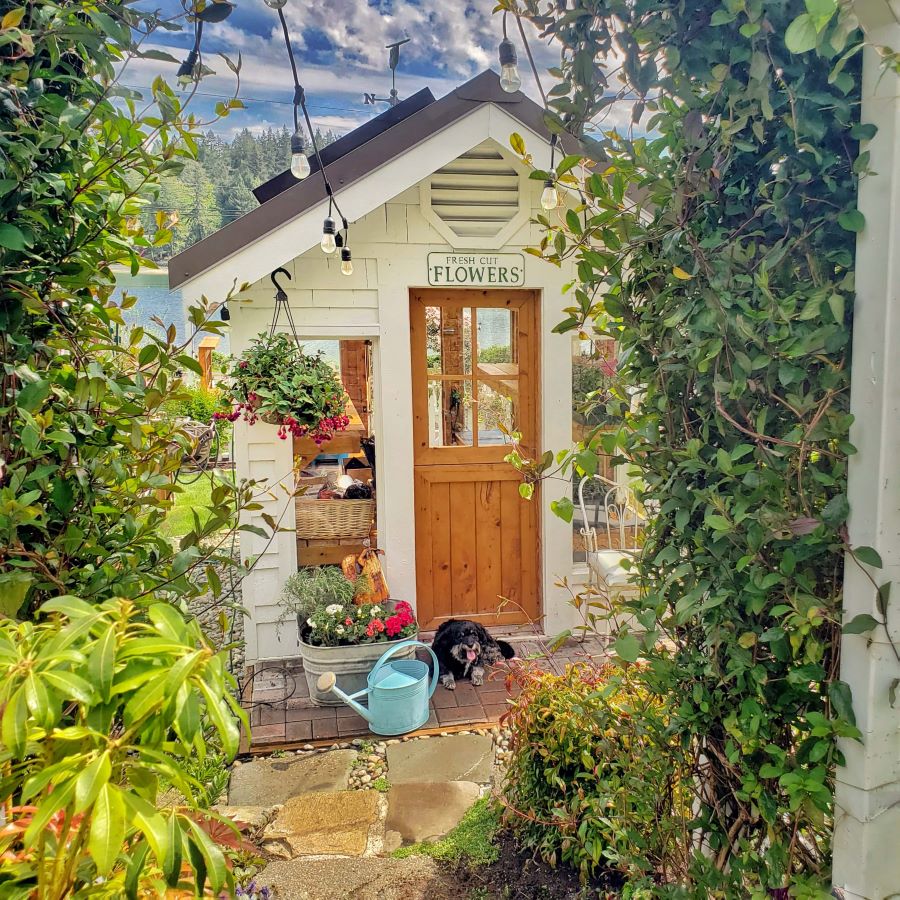
Try to take some time every day to walk the garden. It’s a great time to…
Walking the garden as a daily routine is one of the easiest ways to keep up with your gardening tasks, and it will not seem as overwhelming.
Keep Notes on Your Garden Throughout the Season
Keeping notes throughout the season will help you when it comes time to start planning next year’s garden, You’ll be able to remember the critical issues that need to be addressed going forward.
Clean Greenhouses and Garden Sheds
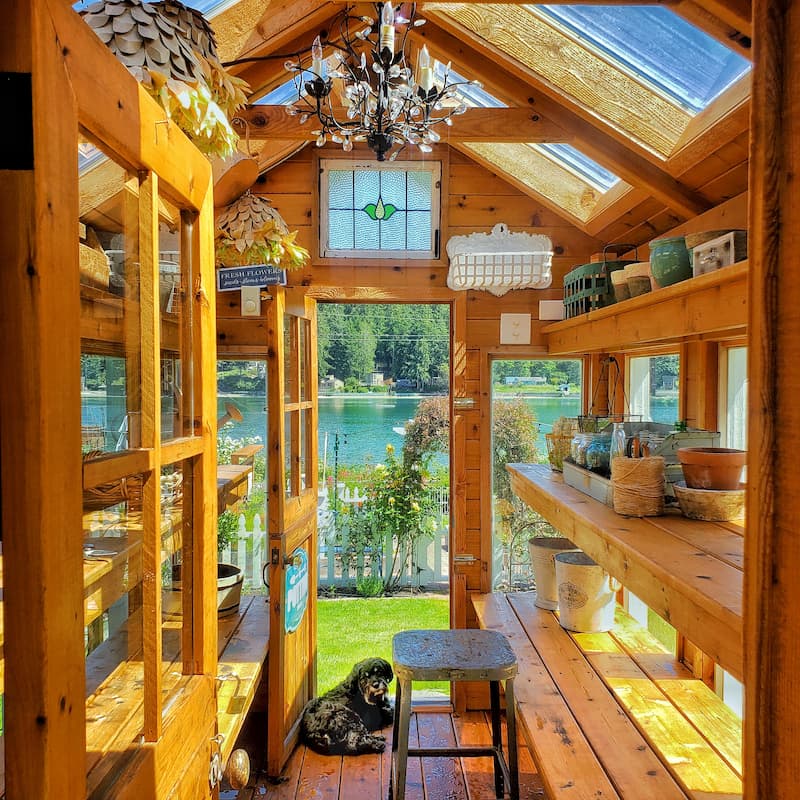
This is a great time to clean out your greenhouse or potting shed if you have one. Discard any dead or diseased plants. Clean pots and containers are necessary to control greenhouse pests.
Common Questions About Pacific Northwest Gardening
What Can I Plant in June in Western Washington?
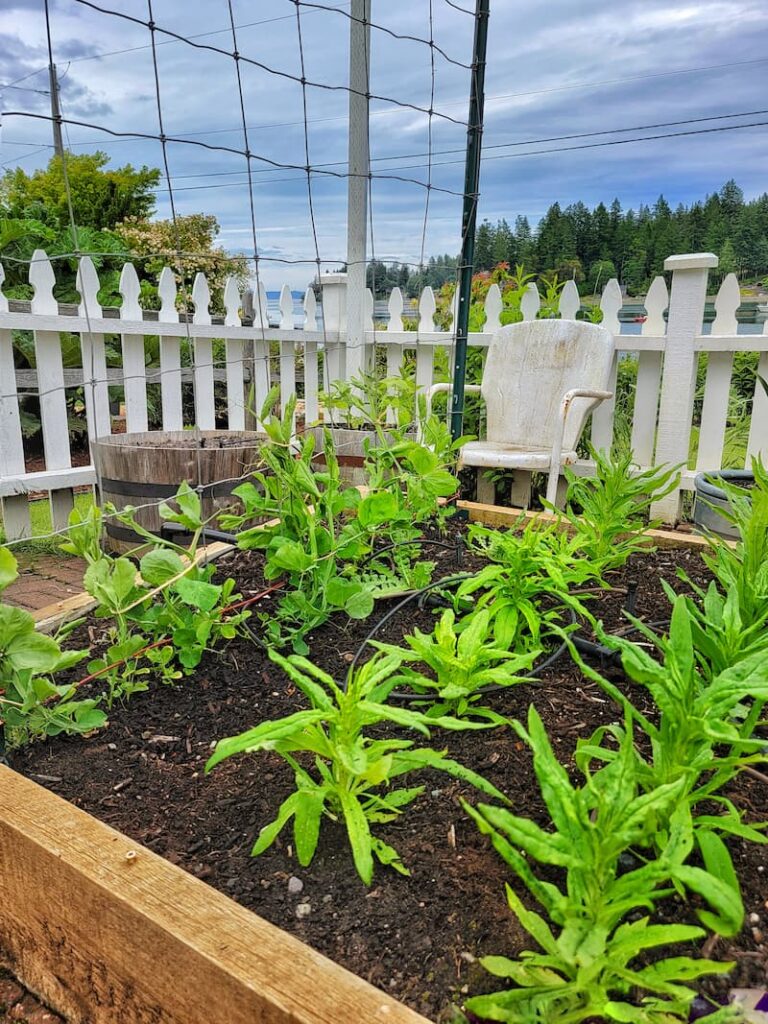
Transplant these summer crops as soon as possible.
Sow the following seeds directly into the soil.
What Flowers Can You Plant in June in the Pacific Northwest?
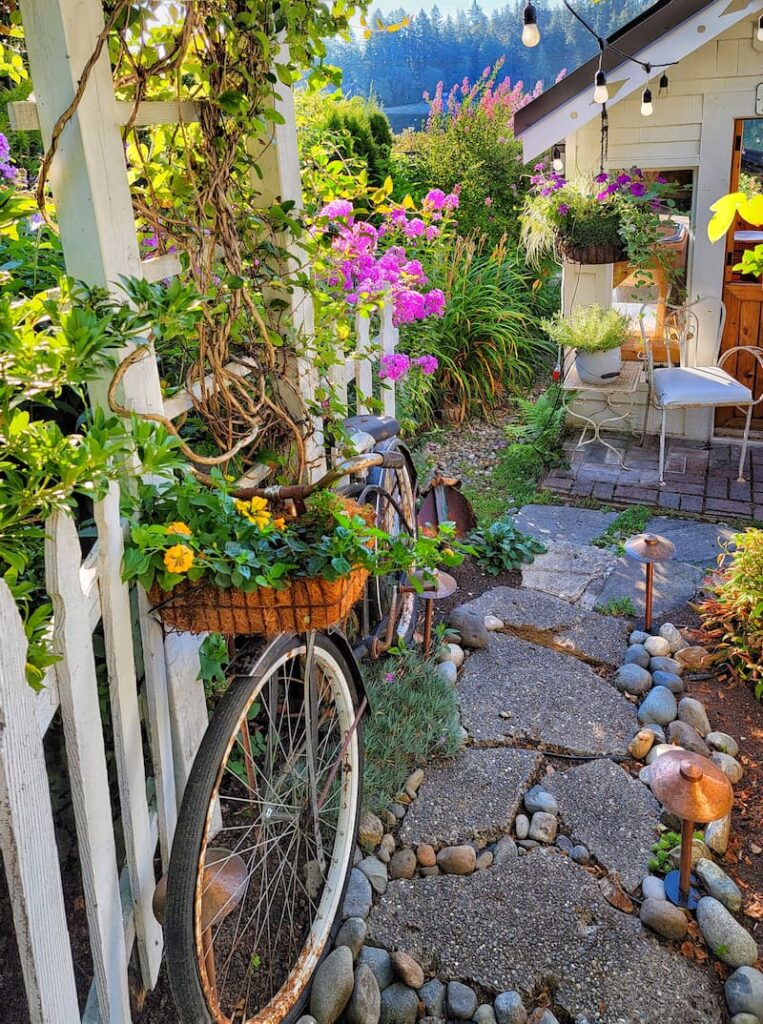
What Perennials Are Good to Plant in June?
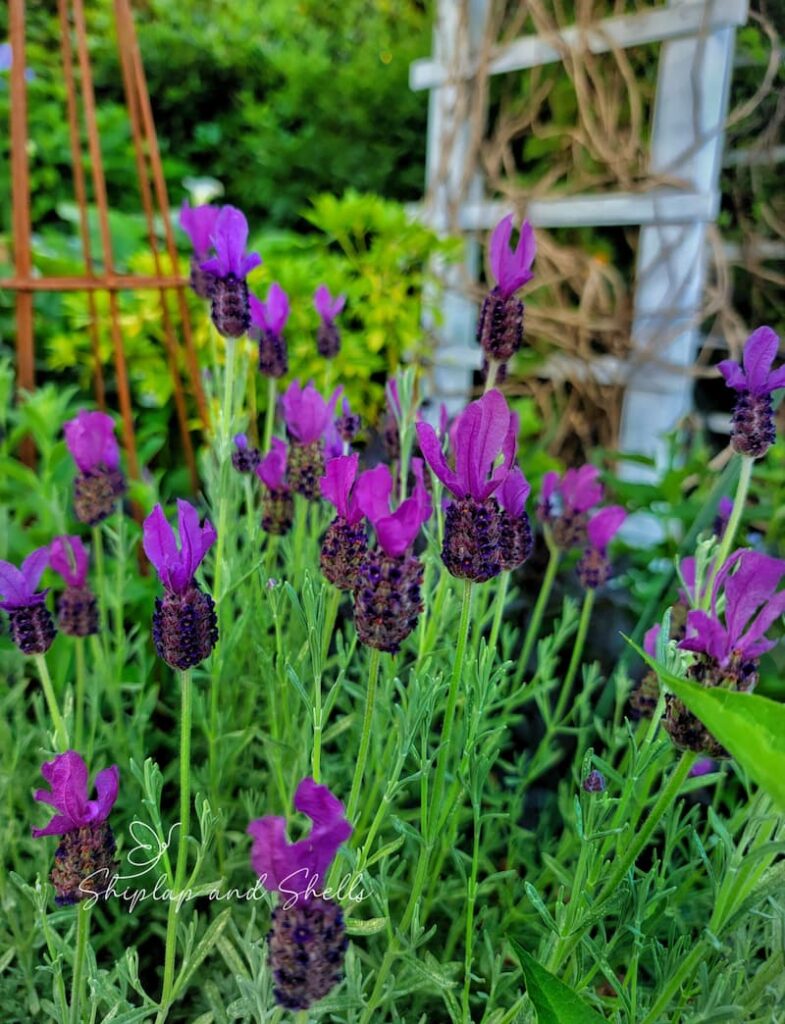
You can still plant perennials before the heat of summer in June but it’s important to choose plant varieties that will establish successfully.
Remember that new plants need a lot of care after planting them in your garden. Be sure to deeply water the newly planted perennial and add organic matter to the soil.
Is June Too Late to Plant Wildflowers?
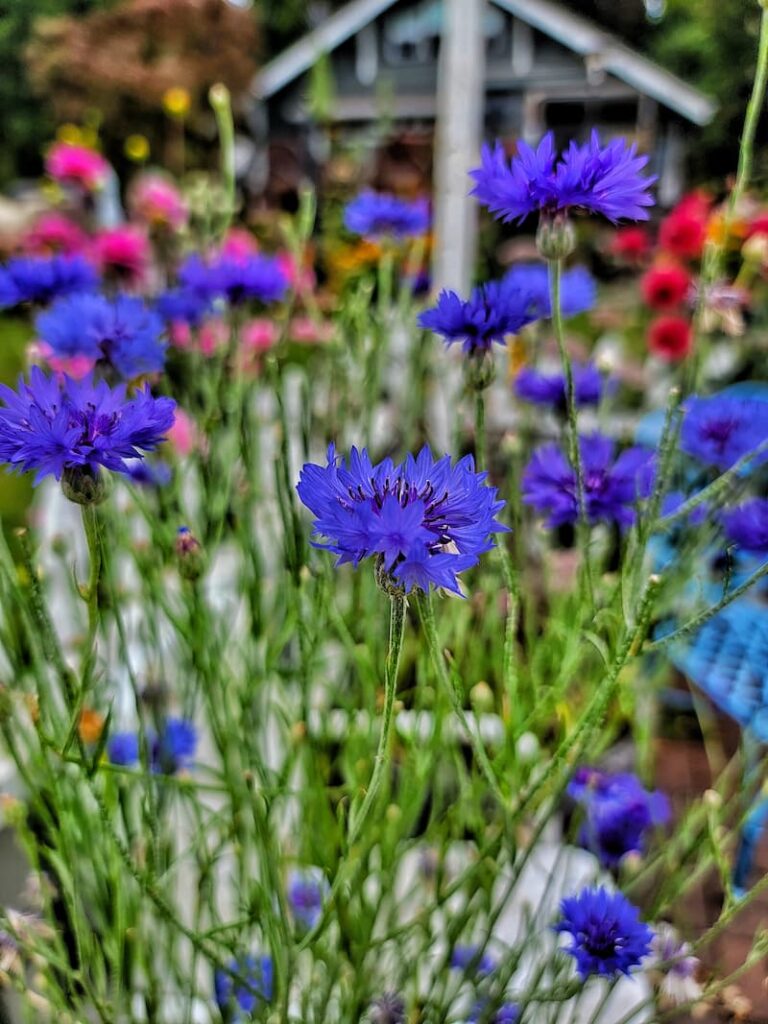
Ideally, wildflower seeds are sown in late fall to early spring, when growing conditions are more favorable for germination and establishment in the garden.
However, if you missed the spring planting window, you can still try sowing wildflower seeds in June. Select wildflower varieties that are known to be successful with late-season sowing or have fast germination and growth.
Some options include cornflower, California poppy, bachelor’s buttons, and annual lupine.
Is it Too Late to Plant Annuals in June?
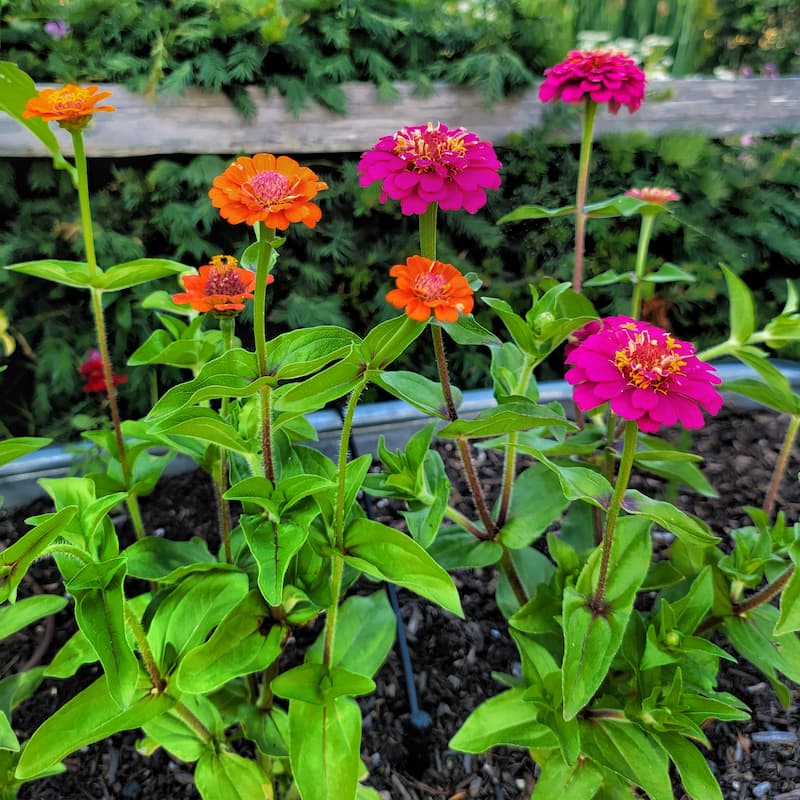
You can still plant annuals in your June garden, especially if you choose fast-growing varieties that have a shorter time to mature.
Zinnias, marigolds, sunflowers, cosmos, and nasturtiums are examples. These plants establish quickly and can catch up in growth during the warmer months.
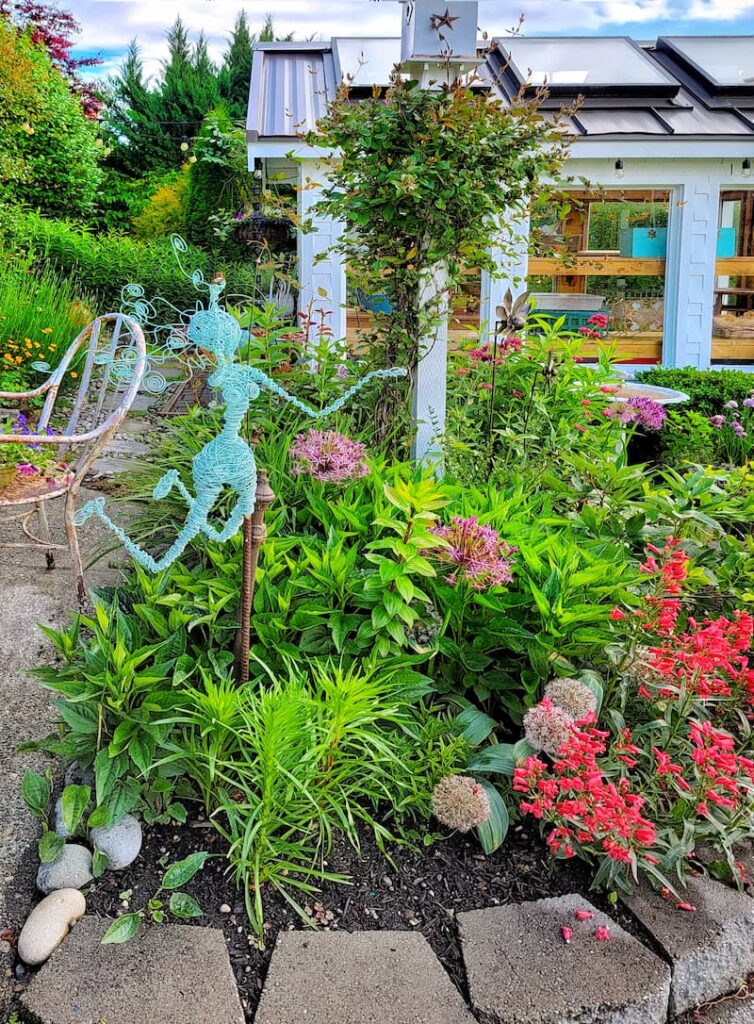
Following these June gardening tips for the Pacific Northwest region can ensure a thriving and beautiful garden throughout the summer months.
I hope these tips are helpful when you’re in the garden during June. Is the weather warming up for you? Get out there and enjoy some garden therapy!
If you have any questions or have a message, I’d love to hear from you. Leave a comment below. And be sure to share this blog post link with anyone who may find these gardening tips useful.
Until next time,
Happy Gardening!

I’m a self-taught hobby gardener. Everything I share on my blog is my opinion and what worked for me.
MORE POSTS
For You To Enjoy
Follow Me for More Inspiration
Shop my Amazon Storefront, LTK sources, and favorite home decor, garden, and lifestyle products. When you purchase from one of my links, I earn a small commission, which helps me continue sharing all the content you expect on my blog.
Be sure to follow me on Pinterest, Instagram, Facebook, TikTok and LIKEtoKNOW.it. Do you like gardening? Join my Facebook Gardening Tips & Tricks group.

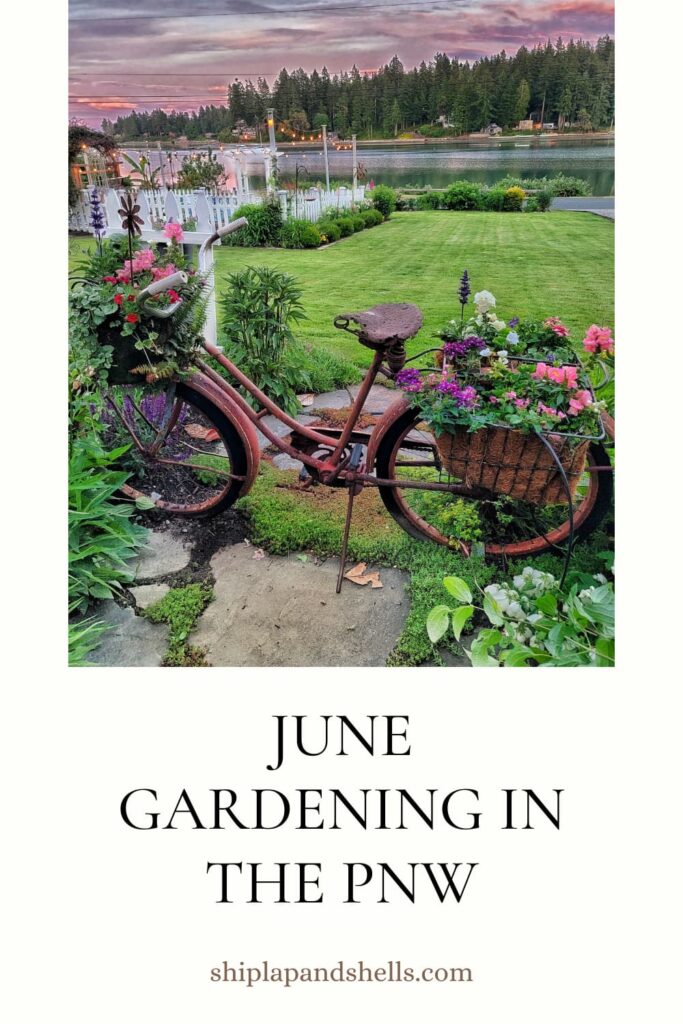

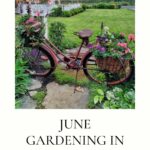
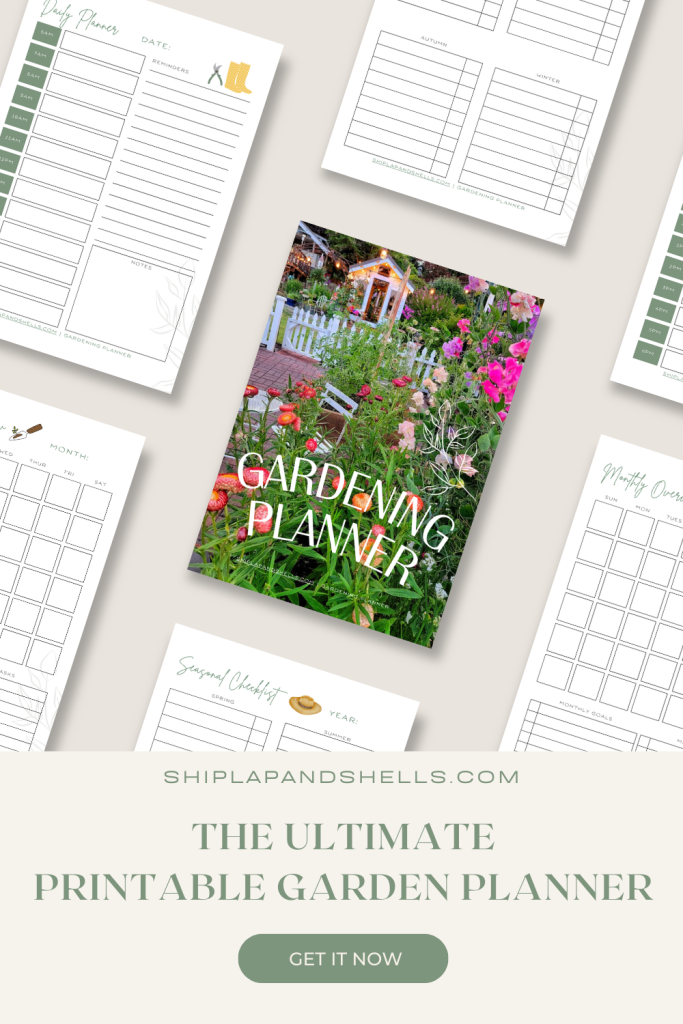
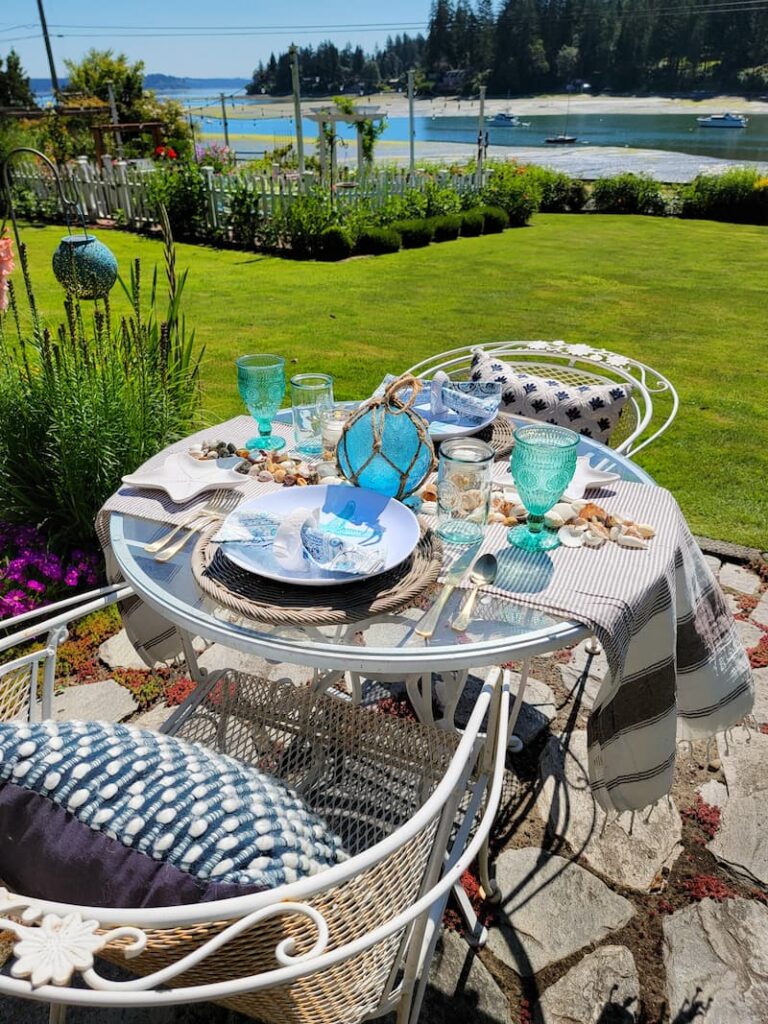
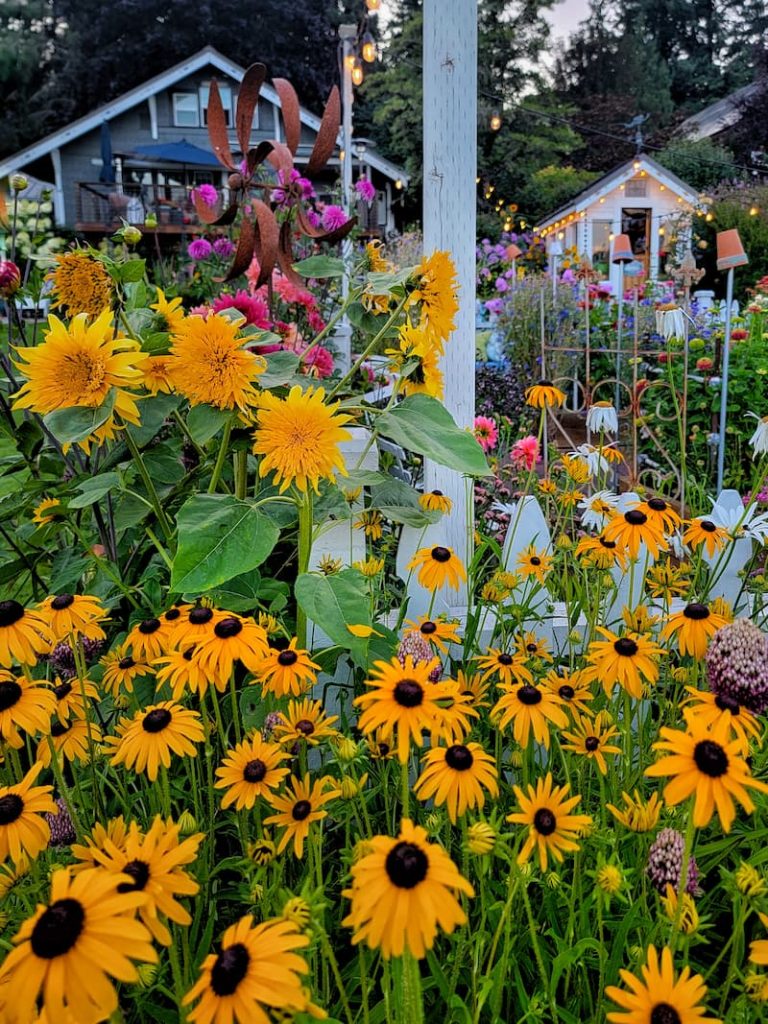
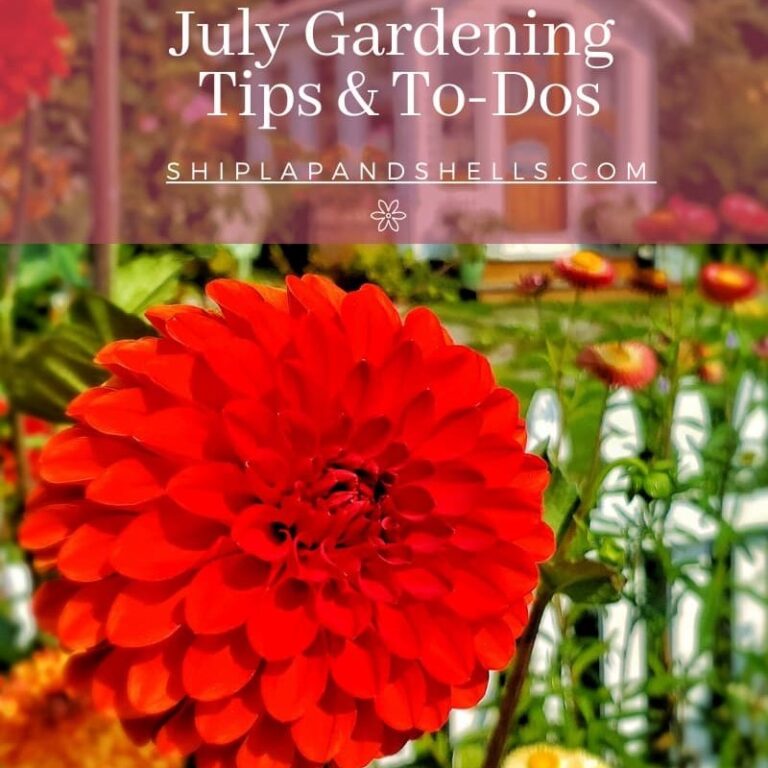

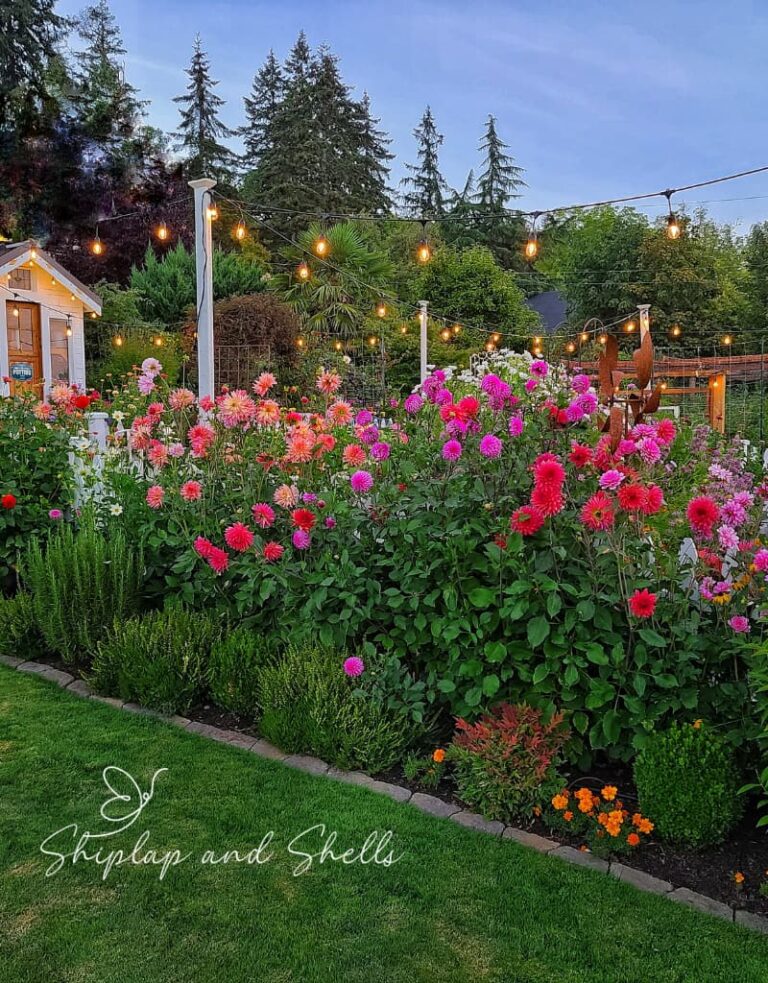
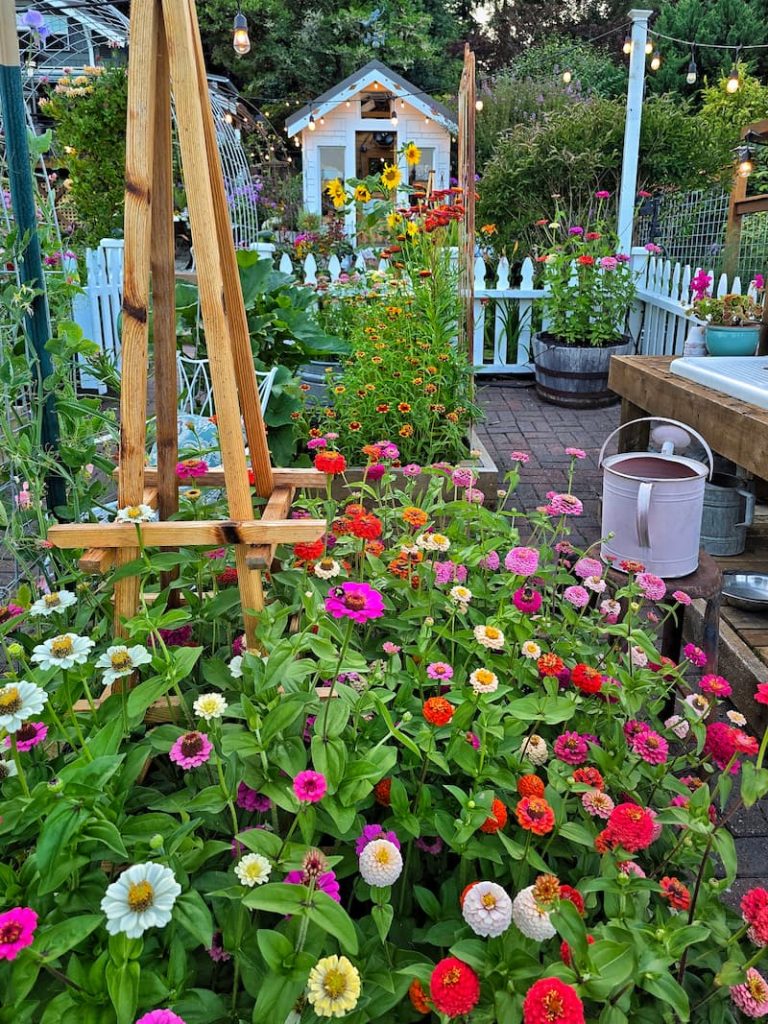
Kim,
Your gardens are amazing. My husband just said it looks like Butchart Gardens. Stunning.
These tips are very helpful Kim! Although I don’t live in the Pacific Northwest region, I really appreciate these gardening posts that you have made. I love the pictures and I also shared some of your posts with my friends. <3
Beautiful garden my friend, thank you for all of the great tips.
Great tips Kim and welcome back! Yoru garden looks amazing!!!!
Thank you so much Rachelle! That is such a sweet compliment. And yes, the PNW is such a wonderful place for gardening! I do love gardening with this amazing view!
Kim, I adore you potager and garden shed – and that view, walking out and seeing the water every day would make me feel like I was in heaven. Your zone is perfect for growing so many beautiful things.
Thank you so much Rachelle! That is such a sweet compliment. And yes, the PNW is such a wonderful place for gardening! I do love gardening with this amazing view!
Most of these tips work for me too even though I’m across the pond! Great idea to make a note of the changes you want to make in the garden – I try to do that but don’t always get around to it. Your Rhododendrons are so beautiful Kim – we can’t grow them because our soil is alkaline so I’ll just crush on yours instead! Hope you are having a lovely week!
Thank you Jayne! Soil is everything, isn’t it? I am saying goodbye to my rhododendrons now. They do not last as long as I would like. Thank you for visiting. I really appreciate it!
I’m in a totally different zone, Kim, but I love these gardening posts with all the tips and tricks. It’s so inspiring to see all the different colors and plant combinations you put together. Every bloom is looks like it should be in a magazine! Hugs, CoCo
You are so sweet CoCo. I really appreciate the compliment. I am inspired by your blog as well. It is truly one of my favorites!
Your garden is SO beautiful Kim!! My husband takes care of our roses – I’m going to tell him about bone meal! 😉 Thanks for all the tips as well as the gorgeous inspiration!
That’s so nice of you Barbara, Thank you! I probably need his help with roses. I can’t seem to stop the black spot, no matter how hard I try!